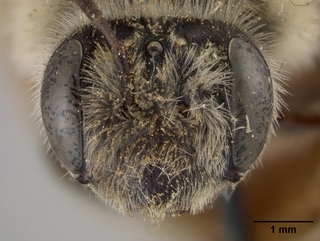
Smithsonian Institution, Entomology Department · 9
Andrena sitiliae, female, face |
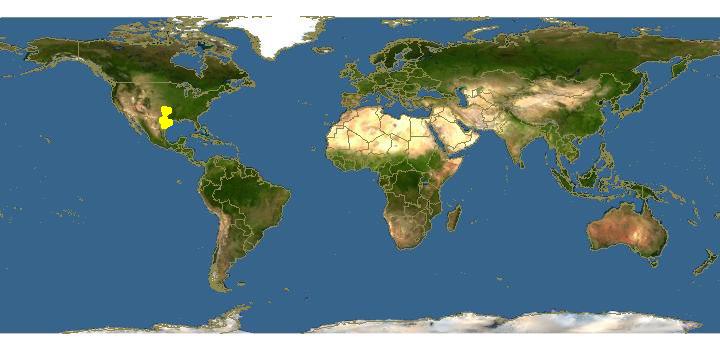
Click on map for details about points.
|
80x5 -
240x3 -
240x4 -
320x1 -
320x2 -
320x3 -
640x1 -
640x2
Set display option above.
Click on
images to enlarge. |
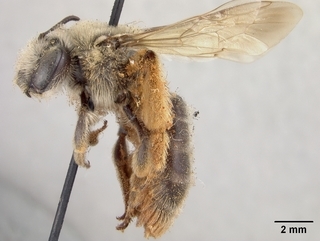
Smithsonian Institution, Entomology Department · 9
Andrena sitiliae, female, side |
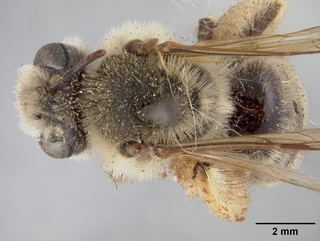
Smithsonian Institution, Entomology Department · 9
Andrena sitiliae, female, top |
|
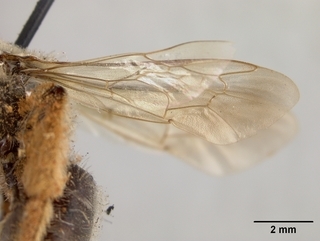
Smithsonian Institution, Entomology Department · 9
Andrena sitiliae, female, wing |
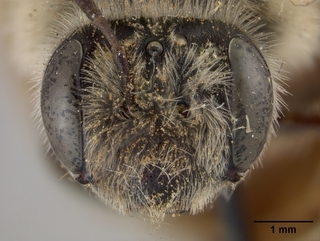
Smithsonian Institution, Entomology Department · 1
Andrena sitiliae, face |
|
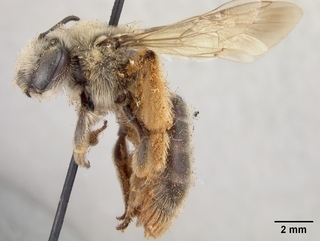
Smithsonian Institution, Entomology Department · 1
Andrena sitiliae, side |
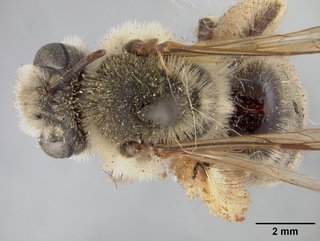
Smithsonian Institution, Entomology Department · 1
Andrena sitiliae, top |
|
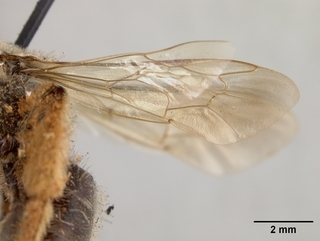
Smithsonian Institution, Entomology Department · 1
Andrena sitiliae, wing |
|
Overview |
Reprinted with permission of the University of Nebraska State Museum from:
LaBerge, W. E. 1967. A revision of the bees of the genus Andrena of the Western Hemisphere. Part I. Callandrena (Hymenoptera: Andrenidae). Bulletin of the University of Nebraska State Museum 7: 1-316.
Please report text errors to: leah at discoverlife dot org.
A. sitiliae is a medium-sized bee closely related to A. tonkaworum and A. verecunda. The female of sitiliae is easily recognized because the posterior hind tibial spur is modified similar to the spur of a Plastandrena or an Aporandrena, but more weakly so. The males of sitiliae, on the other hand, have normal hind tibial spurs. Both sexes can be distinguished from those of tonkaworum by the lack of hyaline apical areas on terga 1-5. The male of sitiliae resembles that of afimbriata in lacking subapical sternal fimbriae and in the reflexed sixth sternum but differs in the shiny, unshagreened terga.
FEMALE. MEASUREMENTS AND RATIOS. — N = 11; length, 13-14 mm; width, 3.0-4.5 mm; wing length, M = 4.55 ± 0.178 mm; FL/FW, M = 1.04 ± 0.011; FOVL/FOVW, M = 2.13 ± 0.069.
INTEGUMENTAL COLOR. — Black except as follows: tips of mandibles and flagellar segments 5-10 dark rufescent below; tegulae slightly rufescent to piceous; wing membranes hyaline, slightly infumate apically, veins dark reddish-brown; terga 2-4 with apices extremely, narrowly hyaline, brownish; sterna 2-5 with apices broadly hyaline, colorless to yellowish; distitarsi rufescent; tibial spurs yellow.
STRUCTURE. — Antennae short, scape equal in length to flagellar segments 1-3; flagellar segment 1 equal in length to segments 2-4, segment 2 about equal to 5, segments 3 and 4 subequal to each other and slightly shorter than 2. Eye about three times as long as broad, inner margins parallel or converging extremely slightly towards mandibles. Malar space, mandible and galea as in verecunda. Maxillary palpus extended forward surpasses tip of galea by no more than length of last palpal segment, segmental ratio of about 1.4:1.5:1.0:1.0:0.7:0.8. Labial palpus with first segment somewhat broadened and flattened apically, terete basally, curved, ratio of about 1.6:1.0:0.5:0.7. Labral process, clypeus and supraclypeal area as in verecunda. Genal area about as broad as eye in profile, with punctures minute and crowded near eye margin, small and sparser posteriorly, surface dulled by fine reticular shagreening. Vertex above lateral ocellus equal one and one-half ocellar diameter or slightly more, sculptured as in verecunda. Face above antennal fossae as in verecunda. Facial fovea short, extends down to level of upper margin of antennal fossa or slightly beyond, narrowed and rounded below, broad and rounded above, separated from lateral ocellus by about two-thirds an ocellar diameter.
Pronotum, mesoscutum and scutellum as in verecunda but mesoscutal punctures somewhat shallower, with bases dulled, more obscure; parapsidal line short:, slightly shorter than from its posterior end to margin of scutum. Propodeum as in verecunda but corbicular area less shiny. Mesepisternum and metepisternum as in verecunda. Fore wings with three submarginal cells, vein 1st m-cu meets second cell at or before middle of cell, second submarginal cell along posterior margin longer than first cell, along anterior margin about twice length vein r from pterostigma to second cell; pterostigma long, about as broad as from inner margin prestigma to wing margin. Middle basitarsus narrower thin hind, parallel-sided, anterior apical angle not spine-like. Claws normal; hind tibial spur bent at about one-fourth to one-third distance from base, with posterior internal margin broadened into a slight membranous flange in area of bend.
Metasomal terga dulled by regular fine reticular shagreening except at extreme apices; terga 1-4 with minute round punctures separated mostly by three to four punctures widths, apical area punctures not noticeably more abundant than basal. Pygidial plate with broad, rounded apex, almost U-shaped, but broader basally. Sterna 2-5 as in verecunda.
VESTITURE. — In general pale ochraceous above to white or cinereous on sides and below. Terga 2-4 without distinct pale apical pubescent fasciae; terga 5 and 6 with hairs yellow medially, white laterally. Sterna 2-5 with long suberect hairs apically as in verecunda. Propodeal corbicula, trochanteral flocculus and tibial scopa as in verecunda; scopal hairs yellow to ochraceous, not washed with brown posteriorly.
MALE. MEASUREMENTS AND RATIOS. — N = 20; length, 11-13 mm; width, 2.5-3.5 mm; wing length, M = 4.08 ± 0.115 mm; FL/FW, M = 1.09 ± 0.005; FS1/FS2, M = 2.69 ± 0.043.
INTEGUMENTAL COLOR. — Black except as follows: mandibular apical fourth and flagellar segments 5-11 below dark rufescent; tegulae translucent, rufescent; wing membranes hyaline, colorless or slightly infumate apically, veins red to dark reddish-brown; terga 2-5 with apical areas extremely slightly rufescent; sterna 2-5 apically hyaline, yellowish; distitarsi slightly rufescent; tibial spurs yellow.
STRUCTURE. — Antennae short, in repose reaching about to middle of tegulae; scape equal in length to less than length of segments 1-3; segment 1 equal in length to about succeeding two and one-halt segments; segments 2-5 as in female. Eye about three and one-fourth times as long as broad, inner margins converging towards mandibles. Mandibles, malar space and galea as in female. Maxillary palpus as in female but segmental ratios of about 1.0:1.2:0.9:0.8:0.7:0.9. Labial palpus as in female but ratio about 1.4:1.0:0.8:0.9. Labrum, clypeus, supraclypeal area, genal area, vertex and face above antennal fossae as in female.
Thoracic and metasomal sculpturing as in female except as follows: propodeum with lateral surfaces duller; terga 1-5 with surfaces often slightly shinier, dense reticular shagreening often 3 restricted to about basal halves especially on terga 2 and 3; sterna shinier, less punctate. Wings and pterostigma as in female. Claws and tibial spurs normal. Sternum 6 as in afimbriata.
Genitalia and sterna 7 and 8 (Figs. 179-183) similar to those of crawfordi but gonoforceps blunter at apices; gonocoxite with dorsal lobe turned outwards; sternum 7 narrower in apical region; sternum 8 with basal area much shorter and neck region longer.
VESTITURE. — Generally white to cinereous, occasionally pale ochraceous on vertex and thoracic dorsum. Terga 1-5 without apical pale pubescent fasciae, otherwise as in verecunda. Sterna 2-5 without subapical fimbriae of long suberect barbed hairs, otherwise as in verecunda. Inner surfaces tarsi pale yellow.
TYPE MATERIAL. — The female holotype (USNM No. 10,003) of sitiliae from Cotula, Texas, May 12, 1906, was collected by J. C. Crawford on Coreopsis tinctoria.
DISTRIBUTION. — A. sitiliae is known only from Texas and Oklahoma. It has been collected from April 10th through June 11th from the localities listed below (50 specimens).
OKLAHOMA: Mooreland, Woodward Co.; Stillwater (3 miles E.). TEXAS: Cotula; Crosby; Giddings; LaGrange; Lavaca Co.; Palmetto State Park, Gonzales Co.
Flower Records. In addition to the record of the holotype being taken on Coreopsis tinctoria, this species has been taken only on Pyrrhopappus sp. and P. carolinianus and it seems likely that A. sitiliae is an oligolege of flowers of plants of the genus Pyrrhopappus (Compositae).
|
|
|
Names | |
|
|
|
References |
Andrena sitiliae Viereck, 1909, Proceedings of the Entomological Society Washington, vol. 11, p. 144.
Andrena (Pterandrena) sitiliae: Lanham, 1949, University of California Publications in Entomology, vol. 8, p. 200.
|
|
| Supported by | |
Updated: 2024-04-24 05:07:43 gmt
|